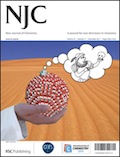Welcome to one of our favorite category of our NJC blog. Here we get to showcase a selection of our authors of the November issue of NJC. Scroll down to meet excellent and experienced scientists who have donated their time and talents to make a meaningful contribution to scientific research.
Introducing…
Dr Karine PHILIPPOT, research director (CNRS) at the Department of Coordination Chemistry at the University of Toulouse in Toulouse, France.
 Her research interests are in the area of Nanocatalysis, in particular the development of the synthesis of metal containing hybrid nanoparticles and nanomaterials following an organometallic approach; their characterization by a combination of techniques from molecular chemistry and solid state chemistry; Study of their surface chemistry and application in colloidal or heterogeneous catalysis.
Her research interests are in the area of Nanocatalysis, in particular the development of the synthesis of metal containing hybrid nanoparticles and nanomaterials following an organometallic approach; their characterization by a combination of techniques from molecular chemistry and solid state chemistry; Study of their surface chemistry and application in colloidal or heterogeneous catalysis.
In her paper published in NJC, Karine Philippot and her coworkers describe the successful synthesis of small ruthenium nanoparticles using a novel family of ligands as stabiliers. “This work demonstrates that non classical ligands can be used to prepare novel metal nanoparticles in the objective to tune their surface properties.”
On choosing NJC to publish this work, Karine comments: “The decision for submitting this work to NJC was taken because we thought it would be of interest for the large community of NJC readers as it concerns both organometallic chemistry as well as metal nanoparticles chemistry with basic scientific concepts.”
When asking which scientific problem she would like to solve: “To find proper ligands for the preparation of well-controlled metal nanoparticles with appropriate surface properties for target catalytic reactions like enantioselective ones, a field in which a long way still remain to be covered in nanocatalysis” – she replied.
Multi-site coordination N-phosphanylamidine ligands as stabilizers for the synthesis of ruthenium nanoparticles by Raymond Bronger, Thanh Dung Le, Stéphanie Bastin, Jordi García-Antón, Cécilia Citadelle, Bruno Chaudret, Pierre Lecante, Alain Igau and Karine Philippot, New J. Chem., 2011, 35, 2653-2660; DOI: 10.1039/C1NJ20465C.
Dr Minghuey SHIEH,
 Professor of Chemistry at the National Taiwan Normal University in Taipei, Taiwan whose research fields are Metal Cluster Chemistry, Organometallics, Material Chemistry and Computational Chemistry. “Our current research interests are mainly focused on synthetic, magnetic, photophysical, electrochemical, and theoretical studies of heavier main group element -containing transition metal carbonyl clusters.”
Professor of Chemistry at the National Taiwan Normal University in Taipei, Taiwan whose research fields are Metal Cluster Chemistry, Organometallics, Material Chemistry and Computational Chemistry. “Our current research interests are mainly focused on synthetic, magnetic, photophysical, electrochemical, and theoretical studies of heavier main group element -containing transition metal carbonyl clusters.”
In their NJC article, Minghuey and her colleagues demonstrated the selective reactivity of [SFe3(CO)9]2─ toward a series of functionalized organic halides or inorganic mercury salts under the condition of orbital or charge control on the basis of DFT calculations. Besides, the electrochemistry of these functionalized clusters was also investigated to address their relevant electronic properties.
“NJC is a high quality and fast editing international journal that covers a wide range of multidisciplinary chemistry for a more diverse readership” explains why Minghuey consider that their work is particularly suitable for NJC.
“The functionalization of metal clusters is of interest to inorganic chemists and those who are interested in the reactivity of metal clusters. The factors governing the accessibility of the reactive sites of metal clusters for different electrophiles are still not fully understood…” says Minghuey when talking about scientific problem that she is focused on and she addes: “in this study, we combined synthetic, spectroscopic, crystallographic, electrochemical, and computational studies to better understand the questions about the chemoselectivity of the triiron sulfide cluster toward various reagents, which provided new directions of applications.”
Reactions of the μ3-sulfido triiron cluster [SFe3(CO)9]2− with functionalized organic halides and mercury salts: selective reactivity, electrochemistry, and theoretical calculations by Chia-Yeh Miu, Hsin-Hung Chi, Szu-Wei Chen, Jiann-Jang Cherng, Miao-Hsing Hsu, Yu-Xin Huang and Minghuey Shieh; New J. Chem., 2011, 35, 2442-2455; DOI: 10.1039/C1NJ20279K.
Dr Shanmugam MUTHUSUBRAMANIAN is Professor of Organic Chemistry at the Madurai Kamaraj University in India.
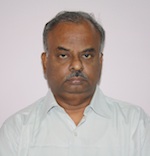 “My current research is focus on synthesis of heterocyclic compounds.” His NJC paper in this month’s issue reveals an interesting restricted rotation of phenyl ring, not a common feature at room temperature, in a set of bis(2-aryl-4-arylquinolin-3-yl)sulfanes as evidenced by NMR data.
“My current research is focus on synthesis of heterocyclic compounds.” His NJC paper in this month’s issue reveals an interesting restricted rotation of phenyl ring, not a common feature at room temperature, in a set of bis(2-aryl-4-arylquinolin-3-yl)sulfanes as evidenced by NMR data.
On the main motivation for submitting his work in NJC, Shanmugam comments: “I wanted the article to be published in an interdisciplinary journal and publishing an article in any RSC journal is quite prestigious.”
And which scientific problem he likes to solve: “I enjoy solving the complex structural features of organic molecules by NMR data.“
A green protocol for the synthesis of conformationally rigid sulfur linked bisquinolines by double Friedlander reaction in water by Nidhin Paul, Shanmugam Muthusubramanian and Nattamai Bhuvanesh; New J. Chem., 2011, 35, 2607-2613. DOI: 10.1039/C1NJ20539K.
Dr Norio SHIBATA,
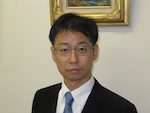 Professor at the Department of Frontier Materials, Nagoya Institute of Technology, Japan. His current research interest is Organofluorine Chemistry and he is author of the article published this month in NJC.
Professor at the Department of Frontier Materials, Nagoya Institute of Technology, Japan. His current research interest is Organofluorine Chemistry and he is author of the article published this month in NJC.
Asymmetric synthesis of chiral trifluoromethylated heliotridane via highly catalytic asymmetric Friedel–Crafts alkylation with β-trifluoromethylated acrylates and pyrroles by Yiyong Huang, Satoru Suzuki, Guokai Liu, Etsuko Tokunaga, Motoo Shiro and Norio Shibata; New J. Chem., 2011, 35, 2614-2621; DOI: 10.1039/C1NJ20550A.
”Fluorinated and trifluoromethylated analogues of biologically attractive molecules have become increasingly more important in medicinal chemistry in recent years. This paper affords one of the nice approaches for the synthesis of trifluoromethylated analogue of Heliotridane via highly catalytic asymmetric Friedel-Crafts alkylation with beta-trifluoromethylated acrylates”, says Norio who chooses the NJC for the publication ”Due to very personally reason. I have visited France more than 6 times, and more than ten students in my laboratory have also visited France totally more than 300 days in recent three years. I have now many friends in France. Since NJC is supported in part by CNRS, I have decided to start submitting our works to NJC.”
“The reason why God did not introduce fluorine(s) into amino acids and DNAs in human being”, would be a scientific problem that Norio would like to solve.
Dr Leone SPICCIA is Professor of Chemistry at the Monash University, Australia.
 “We are exploring many fields of research including: Radiolabelled agents for the imaging and treatment of cancer; Diagnostics and therapeutics based on metal complex-bioconjugates; Metallo-enzyme mimetics, metal complexes as artificial nucleases; High affinity agents for the selective binding and sensing of biomolecules; Water oxidation catalysts and water splitting devices – Solar Fuel and Dye sensitized solar cells.“
“We are exploring many fields of research including: Radiolabelled agents for the imaging and treatment of cancer; Diagnostics and therapeutics based on metal complex-bioconjugates; Metallo-enzyme mimetics, metal complexes as artificial nucleases; High affinity agents for the selective binding and sensing of biomolecules; Water oxidation catalysts and water splitting devices – Solar Fuel and Dye sensitized solar cells.“
In their NJC paper, Leone and his colleagues described methodologies for the functionalisation of magnetic nanoparticles with macrocyclic ligands that can be efficiently radiolabelled with 64Cu2+. These radiolabelled materials are shown to be very resistant to metal ion leaching and are therefore promising prototypes for the development of multi-modal cancer imaging agents based on PET and MRI.
“The paper is multidisciplinary in nature covering aspects of materials chemistry, organic synthesis, coordination chemistry, radiochemistry and medical imaging. We were of the opinion that the paper would appeal to the broad audience of NJC”, explaining why choosing the NJC journal.
If Leone could solve any scientific problem, it would be: “Solving the energy crisis through the development of cheap technologies for harvesting solar energy as this could improve the living standards of billions of people on our planet.”
Synthesis, colloidal stability and 64Cu labeling of iron oxide nanoparticles bearing different macrocyclic ligands by José A. Barreto, Madlen Matterna, Bim Graham, Holger Stephan and Leone Spiccia; New J. Chem., 2011, 35, 2705-2712; DOI: 10.1039/C1NJ20558G.
We would like to thank to our authors for making time in their busy schedules to answer these questions for us.
Why not submit your high impact research to us today or alternatively email us your suggestions.


















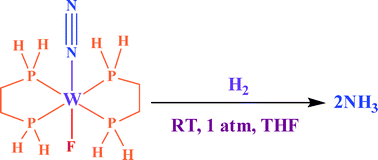



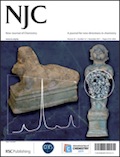

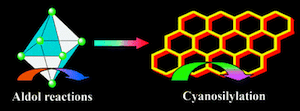
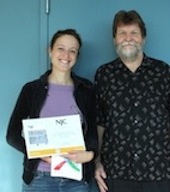
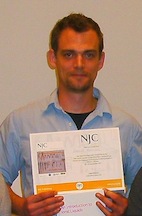


 “My current research is focus on synthesis of heterocyclic compounds.” His NJC paper in this month’s issue reveals an interesting restricted rotation of phenyl ring, not a common feature at room temperature, in a set of bis(2-aryl-4-arylquinolin-3-yl)sulfanes as evidenced by NMR data.
“My current research is focus on synthesis of heterocyclic compounds.” His NJC paper in this month’s issue reveals an interesting restricted rotation of phenyl ring, not a common feature at room temperature, in a set of bis(2-aryl-4-arylquinolin-3-yl)sulfanes as evidenced by NMR data.

